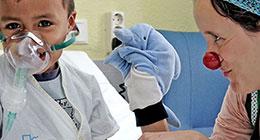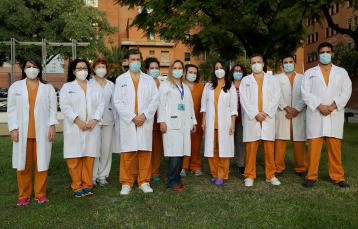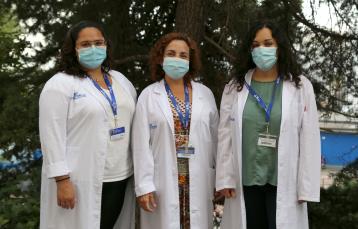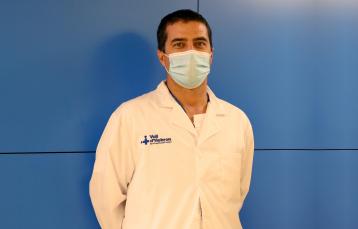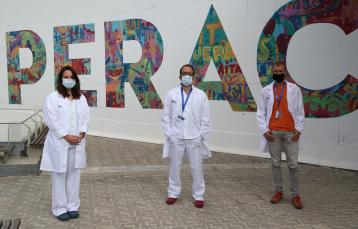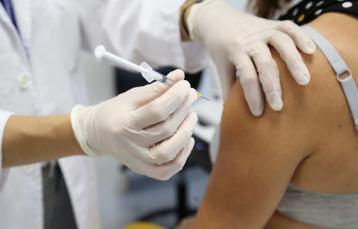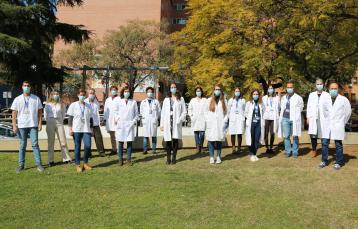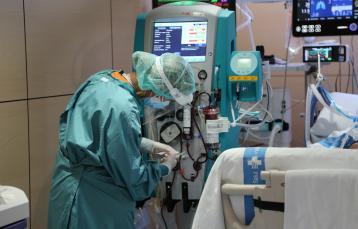A study by the Vall d'Hebron and Germans Trias i Pujol University Hospitals, carried out in April 2020, described that one in four patients with severe COVID-19 admitted to the ICU suffered from a venous thromboembolism or pulmonary embolism. However, it was asymptomatic in 62% of the patients. Taking this high frequency of thrombosis into consideration, researchers believe it key to administer higher doses of anticoagulants in ICU patients to reduce the risk of complications. The results have been published in European Journal of Vascular and Endovascular Surgery, the most prestigious scientific journal in vascular surgery.
The work was born in the first wave of the pandemic, when hospital professionals began to see many patients with severe COVID-19 with suspicion of some type of thrombosis. With the aim of knowing the risk of suffering this type of complications and establishing the follow-up these patients need, the Angiology and Vascular Surgery Services of the Vall d'Hebron and Germans Trias i Pujol hospitals launched a study with the 230 patients admitted on a specific day in April in the ICUs of both hospitals. This is the largest series of patients with COVID-19 and thrombosis in the ICU published to date. The study was carried out in collaboration with the Services of Intensive Medicine and of Anesthesiology, Resuscitation and Pain Management of Vall d'Hebron, and the Service of Internal Medicine of the Hospital Germans Trias i Pujol.
The researchers performed an ultrasound on each of the 230 patients admitted to the ICU, in a total time interval of 48-72 hours. These tests were carried out in a short time to minimize the exposure of healthcare professionals to COVID-19 at a difficult time in the pandemic regarding cases and availability of personal protective equipment. The objective was to determine whether these patients had thromboembolic complications such as deep vein thrombosis or pulmonary embolism.
At the time of ultrasound, 58 patients (25.2%) who had venous thromboembolisms and/or pulmonary embolisms were detected. Of these, only 32.8% (which represents 7% of all patients) were asymptomatic. The patients were followed for a week to check their progress and see if new complications developed. In this follow-up, no additional ultrasounds were performed in asymptomatic cases, but it was based on the appearance of events with symptoms or accidental findings. After seven days, new cases of thrombosis were detected, reaching 61 patients (26.5%). Of these, 37.5% (23 patients, 8.3% of the total) had symptoms. Specifically, 38 were asymptomatic, 7 had symptomatic venous thrombosis in the legs, 8 had a symptomatic pulmonary embolism, and 8 had both venous thrombosis and pulmonary embolism with symptoms.
The study also shows that patients with venous thromboembolisms in the legs had a longer stay in the ICU (22 days on average in cases with thrombi and 17 days in cases without thrombi), although there were no differences in mortality.
“We found that patients with severe COVID-19 have an increased risk of venous thromboembolism. This is due to the SARS-CoV-2 infection itself and also due to the immobilization of the patients and the treatment they need, such as the implantation of catheters”, explains Dr. Sergi Bellmunt, head of the Angiology, Vascular Surgery and Endovascular Surgery Service at the Vall d’Hebron Hospital and researcher at the Vall d'Hebron Research Institute (VHIR). Regarding the high percentage of asymptomatic patients, Dr. Bellmunt exposes that “it may be caused to the fact that they are patients who on many occasions are intubated and cannot explain if they notice any symptoms. Furthermore, the fact of lying in bed prevents edema from occurring, that is, leg swelling, a very characteristic symptom of venous thrombosis and without which it may be unnoticed”.
The fact that in many cases thrombosis are not symptomatic is important due to the risk of complications it entails. For example, a thrombus that is in the veins of the leg, if left untreated, could travel to the lung and there cause a pulmonary embolism, which is much more severe. Knowing this risk can help prevent its occurrence.
Based on the results of the study, the authors consider it necessary to administer higher doses of anticoagulant treatment, such as heparin, as prophylaxis in patients with severe COVID-19 in the ICU. “Knowing that they have a high risk of thrombosis, and taking into account that we have observed few cases with bleeding, it would be necessary to administer heparin in higher doses than usual in these patients, from the moment of admission, to avoid serious complications later”, highlights Dr. Secundino Llagostera, head of the Angiology and Vascular Surgery Service of the Germans Trias i Pujol University Hospital. Currently, there are clinical trials underway, with the participation of the Vall d'Hebron and Germans Trias i Pujol hospitals, which will make it possible to assess the most appropriate dose of heparin in these patients, to balance the risk of thrombosis and bleeding.
Finally, the work also studied the levels of D-dimer in the patients' blood, a marker that is related to the presence of thrombosis. The results showed that levels higher than 1500 ng/mL of D-dimer would allow distinguishing those patients with venous thromboembolism and those with a higher risk of developing complications. The interpretation of this analysis requires caution, since the fact that it is increased does not necessarily mean that there is a thrombosis, but it must be accompanied by a clinical suspicion.
The main limitation of the study explained by the authors is the fact that it was carried out at a critical time of the pandemic, which made it difficult to closely monitor all patients during their hospital stay.









